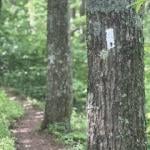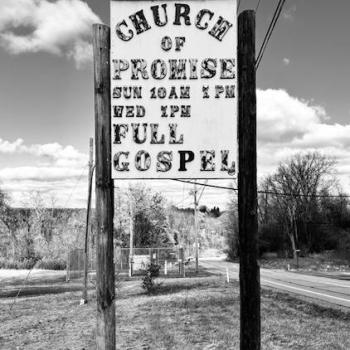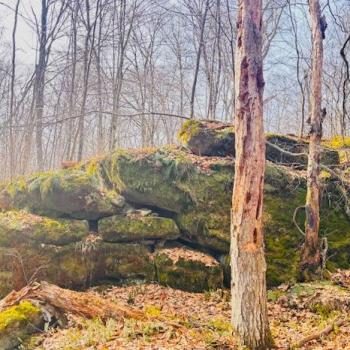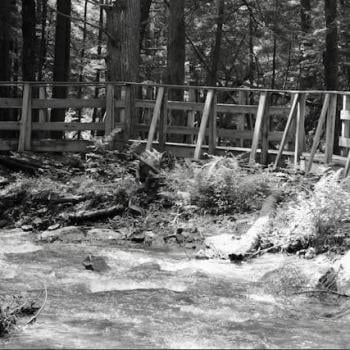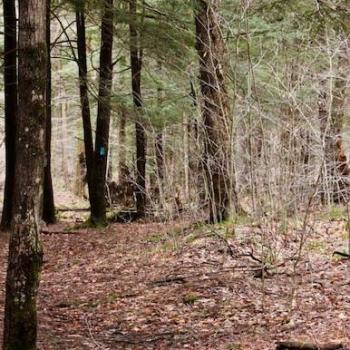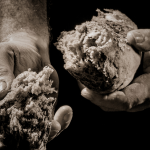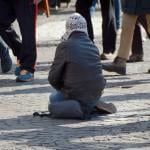This year for my annual backpacking trip, I am heading to Damascus, Virginia. This is a departure from my original plan to hike the Laurel Highlands Trail (LHT). After Hurricane Helene tore through Damascus and other southern towns, I canceled my trip to the LHT to allocate my tourist spending to the communities devastated by the hurricane.
Travel
On Friday, June 6, I traveled from my home to Damascus, Virginia. The drive was rather uneventful, and after seven hours, I arrived at the Dancing Bear Inn in Damascus. This charming hostel was well-equipped with all the necessities for a thru-hike or simply for a comfortable stay. For dinner, I visited the Tipsy Bear where I ordered my usual meal of a burger and fried potatoes (tater tots). I observed that Damascus was in relatively good condition following the hurricane, especially when compared to other towns I have toured or visited post-significant flooding. After dinner, I reconnected with some friends who were in town for a trail race, which provided a pleasant hour and a half of catching up, sharing laughter, and exchanging stories. Subsequently, I returned to my room, reflecting extensively on the journey that lay ahead.
Hike – “That Did not Go as Planned” – Wrestling with Acceptance
Day 1: State Route US 19E to Mile 411.5 – 16.85 miles 3,990 feet.
After a fitful night of sleep, I got up around 0530, my usual time, had some coffee, did some bible study and headed over to the Damascus Diner for breakfast. Destroyed by Hurricane Helene, the Diner had to rebuild, they said that they had 18 inches of sediment in their restaurant. After an awesome meal of homemade biscuits and fried chicken sliders with gravy and cheesy potatoes, I was off to the outfitters who would shuttle me to US 19E.
As I would soon find out, this trip was going to be more of a challenge than I thought it would be. My old nemesis, long COVID had other plans about my ambitions for completing this section. After a nice descent into a stream area, I immediately started climbing around 1000 feet to top of my first mountain and my lungs, my legs all decided that this was not for them. I tried focusing on Psalm 102, a praise Psalm regarding God’s glory in creation, but mostly it was a lot of WTF’s as I began to realize that I had bitten off more that I could chew.
After covering sixteen miles, I arrived at my campsite for the night, feeling fatigued but satisfied. However, my body had endured significant stress, which caused concern. Consuming food throughout the day was difficult, and I struggled to intake adequate nutrition due to complications that appear to be associated with long COVID, experienced during other endurance activities. Despite these challenges, I managed to eat dinner, observed the sunset, listened to a gathering of crows, and eventually retired to my tent for an uneasy night’s sleep. Long COVID has resulted in an intolerance for strenuous exercise, which was evident on this night as well. Elevated heart rate and difficulty sleeping persisted, impacting my entire trip and leading me to shorten my journey on the second day.
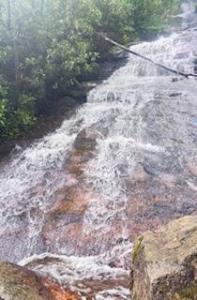
Day 2: Mile 411.5 to Boots Off Hostel
After a fitful night of sleep, I reluctantly got out of my quilt, put my smelly and dirty clothes back on and began the chore of packing up camp. I was able to drink some coffee but eating or even an appetite was nonexistent for a couple of hours into my hike, I stopped at Moreland Gap Shelter for breakfast and to refill water. There, I talked with two thru hikers who were going to stop at a hostel about 6 miles away. I need to do a better job of remembering everyone I meet.
Due to inadequate nutrition the previous day and post-exercise fatigue, this morning did not start well. The distance covered was manageable based on experience as an ultra and endurance athlete, but physical exhaustion was present, similar to post-event feelings experienced since having COVID.
It rained this morning and I was glad for the umbrella that I decided to bring with me. It made things drier. Eventually I made my way to Laurel Fork Falls and the base of Pond Mountain. I tried choking down lunch and enjoying the beautiful waterfall. Overall, the scenery and time in nature was stunning today. At this point, I made a choice to end early, get to Boots Off and shuttle back to Damascus and do a nero on June 9th, my birthday.
After lunch, I faced a 1200-foot, 3.5-mile climb up Pond Mountain. It was challenging given my condition but would have been enjoyable before COVID. The ascent took about two hours, and by the time I reached the top, I felt terrible. Drinking was all I could manage, although I did force down a Nature Valley bar before starting. Finally, at 1730, I arrived at Boots Off Hostel. They agreed to take me back to Damascus. I settled into my lodgings, took a shower, and had dinner.
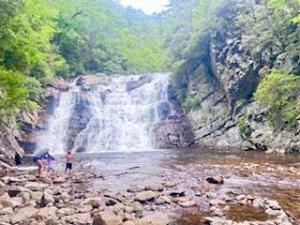
Day 3: Nero – Boots Off Hostel back to Damascus – 13 mile out and back – US 421 to Cross Mountain Road/TN 91
I secured accommodation in Damascus for June 9th at The Speckled Trout, a charming hotel in town. After being dropped off at my vehicle, I returned to Damascus Diner for breakfast, where I consumed a substantial bowl of grits and eggs, my first proper meal in two days. Following breakfast, I visited Damascus Outfitters to acquire a day pack and then proceeded to the gas station to purchase water and snacks for the trail. Subsequently, I drove thirty minutes to the trail head in Shady Valley for a day’s hike.
I arrived at Double Spring Shelter, where I encountered Hobbit, a thru-hiker, and enjoyed a 500-calorie pastry from a gas station. Today’s hike was less strenuous due to the lighter pack, a practice known as slack packing in the thru-hiking community. The reduced weight alleviated strain on my body, although fatigue and post-exercise malaise remained intense. Nonetheless, I was able to consume more food today. After covering 13 miles—accumulating 47 miles of backpacking/slack packing overall—my feet had swollen to the extent that my boots no longer fit, an error stemming from not purchasing a half-size larger. Traditional leather boots require approximately 50–100 miles to break in and are notoriously harsh on one’s feet. Despite the break-in period, my boots were now unsustainable due to the sizing issue.
Upon returning to my vehicle, I checked into my hotel for the night, showered, and had dinner at Wilson’s Grill. There, I savored the best black and blue burger and loaded baked potato salad I have ever had. I then visited Appalachian Distillery for a tasting flight of their bourbon, rye, and vodka, ultimately purchasing some rye. Returning to my hotel, I watched television before retiring for the night. The trip was nearing its conclusion.
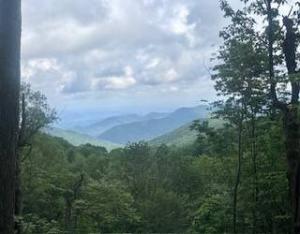
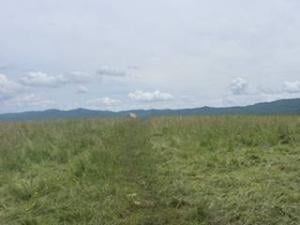
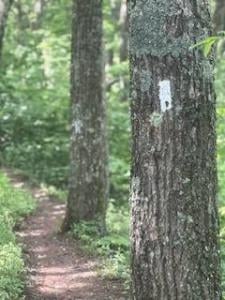

What I learned – The Spiritual Practice of Acceptance
On June 10th, I was up at my usual 0530, sleep was still very disrupted from the amount and intensity of the hiking I had done over the last three days. My room had a full coffee maker, so I made the decision to make a pot of coffee and put it in my travel mug and stopped at Cowboys in town for a breakfast sandwich and cinnamon roll and drive home. It was time to say goodbye to the woods and just like that, a year of planning my backpacking trip was over. It always brings a sense of melancholy to say goodbye.
As I was driving home, I listened to the recording of the retreat the Benedictine Sisters give at the Mount. This time of reflection on the Rule of Saint Benedict and our ecological responsibility had me thinking too of what I had gained from this trip.
Acceptance I am realizing is both a hard pill to swallow and a spiritual practice. A lot of strenuous activity is not fun anymore due to long COVID and I have been trying to avoid this reality for some time now and every time I go out and try and ignore it, my body gives me a big f/u and does what it wants to do. Acceptance as a spiritual practice involves recognizing and embracing reality as it is, without resistance or judgment. It fosters inner peace and allows individuals to navigate life’s challenges with a calm and balanced mindset.
It is often said that suffering arises from attachment. If it were not long COVID, it would be age. Having turned 48 this week, I acknowledge the reality of aging and understand that adjustments need to be made accordingly. Acceptance entails a willingness to relinquish emotional resistance to the reality of “what is.” While acceptance may appear passive, it does not necessarily imply inaction. It does not preclude taking steps to change what can be altered. For example, if one does not secure the job they desperately desire and need, emotional acceptance of that reality will enable continued job searching with reduced stress and anxiety.
To close, acceptance is the affirmation of reality. It does not suggest that reality is inherently good or desirable. Accepting a situation does not imply moral endorsement of the circumstances. It simply means acknowledging “It is.” Practice deep breathing, and repeat these words: “I accept the situation as it is right now even if I do not like it.” Embracing acceptance when facing painful situations is akin to receiving an inoculation against a disease; it allows one to take in a manageable amount of distress to prevent greater harm. By accepting reality, individuals can approach their circumstances with enhanced calmness and clarity, determining appropriate actions, if any, to address their situation.



